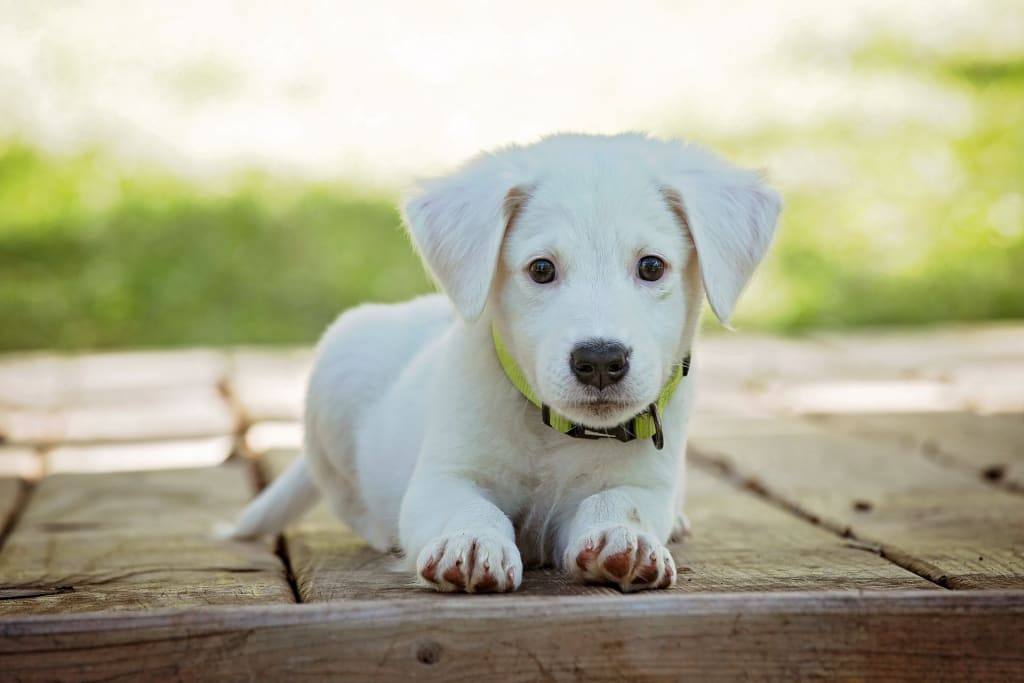PUPPY TRAINING AT HOME
Can You Train Your Puppy at The Comfort of Your Home?

Training a dog as a puppy shapes its behavior in the future. In addition, the correct behavior and obedience of the dog will help ensure its safety and the peace and comfort of the people around it. But before you start the exercises, you need to determine what result you want to achieve.
WHY TRAIN A DOG?
Training goals are selected, among other things, depending on the purpose of the dog breed. So, the breed can be decorative, driving, hunting, service, or related to companion dogs. These goals can be:
- The adequate reaction of the pet to stimuli: transport, external aggression, etc.;
- Submission and obedience;
- Independent decision-making aims to protect a person and himself (including in emergencies).
WHAT DETERMINES THE PUPPY'S BEHAVIOR?

The behavior of any animal is based on reflexes: conditioned and unconditioned, also called instincts. A dog is born with a set of unconditioned reflexes, while conditioned ones are formed throughout life. And the presence of certain conditioned reflexes and their diversity determines what the pet will be like - obedient, cowardly, aggressive, or something else.
It must be remembered that all interactions in the animal world are built on the principle of hierarchy: the subordination of a weak individual to a stronger one.
At the same time, who will take the dominant position is constantly being checked; that is, the animal will always try to take a higher place, and if possible, the place of the leader, including with the help of aggression.
WHERE DOES TRAINING START?
The beginning of training is the determination of the puppy's place in the family. And in this, you must indicate that the main thing in the house is you and your loved ones, and only then comes the dog.
However, it should be remembered that the puppy has the right to your attention, care, and participation in his life.
As well as he has a place to rest, eat, and toilet, a daily routine, according to which he receives food on time, goes for walks, sleep, and satisfies his other needs. Only in this case is it possible to develop the necessarily conditioned reflexes and, accordingly, the desired behavior.
WHEN SHOULD YOU START TRAINING YOUR DOG?
The biggest misconception is that training should start when the dog is older. Consciously or unconsciously, you have been training a puppy from the moment he arrives at your home. Every day you form his set of conditioned reflexes. What they will be - desirable or not, depends on your behavior and participation in raising a pet.
If you don't teach the puppy the basics in a timely manner: the daily routine, hierarchy, rules of behavior, and communication, then a dog can grow out of it that picks or begs, sleeps with you in the same bed, or defecates in the wrong places.
It is better to start training at home, in a familiar environment. On a walk, it will be much more difficult to achieve execution of commands since there are too many interesting things on the street that will distract the pet.
WHAT ARE THE BASIC PRINCIPLES OF HOUSE TRAINING?
So, you have decided on goals and age and designated a dominant position in the family hierarchy. What principles must be followed in order for training to be successful?
- Don't be scared;
- Use the minimum number of words for each command;
- Always follow through on the command;
- Encourage the execution of the command;
- Constantly monitor the behavior of the puppy;
- Try to deal with the dog in a good mood;
- Involve the whole family in dog training;
- Do not force the puppy to exercise if he is tired or sick.
HOW IS A CONDITIONED REFLEX FORMED?
An irritant for forming a conditioned reflex and executing a command can be a word or a gesture. At the beginning of training, they can be combined to facilitate training.
Then the reflex should be reinforced with a special treat. In the future, when your puppy learns the command, he can be encouraged less often or not encouraged in this way at all.
HOW TO ENCOURAGE A PUPPY DURING TRAINING?

Training rewards can be positive or negative. But the negative applies only if an experienced dog handler is involved in training your pet.
At home, only positive encouragement (reinforcement) is used to train a puppy: food, play, praise, and affection.
At the beginning of training, it is better to use food rewards and then move on to rewards with play or praise.
For food rewards, you can not give your pet tasty but harmful foods for him: sausages, sausage cookies, bread, and so on. It is more convenient and healthier for the puppy to use dry food pellets, such as PRO PLAN ® puppy food with the OPTISTART ® complex.
And after nine months, you can give him specialized treats, such as PRO PLAN ® Biscuits, which help support the pet's digestion and the health of his teeth and gums.
Reinforcement with the game is performed with the use of a toy that belongs to the owner. And the puppy gets to play only on "holidays", namely during training after executing commands.
Suppose the results of training at home do not suit you. In that case, if the puppy does not follow the commands or there is no opportunity to train with him, it is better to seek help from a cynologist, with whom it is recommended to start training outdoors when the puppy is fully vaccinated and can walk.





Comments
There are no comments for this story
Be the first to respond and start the conversation.